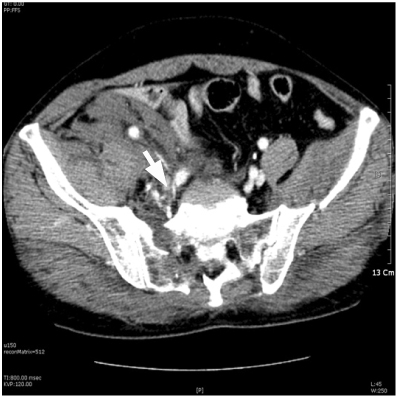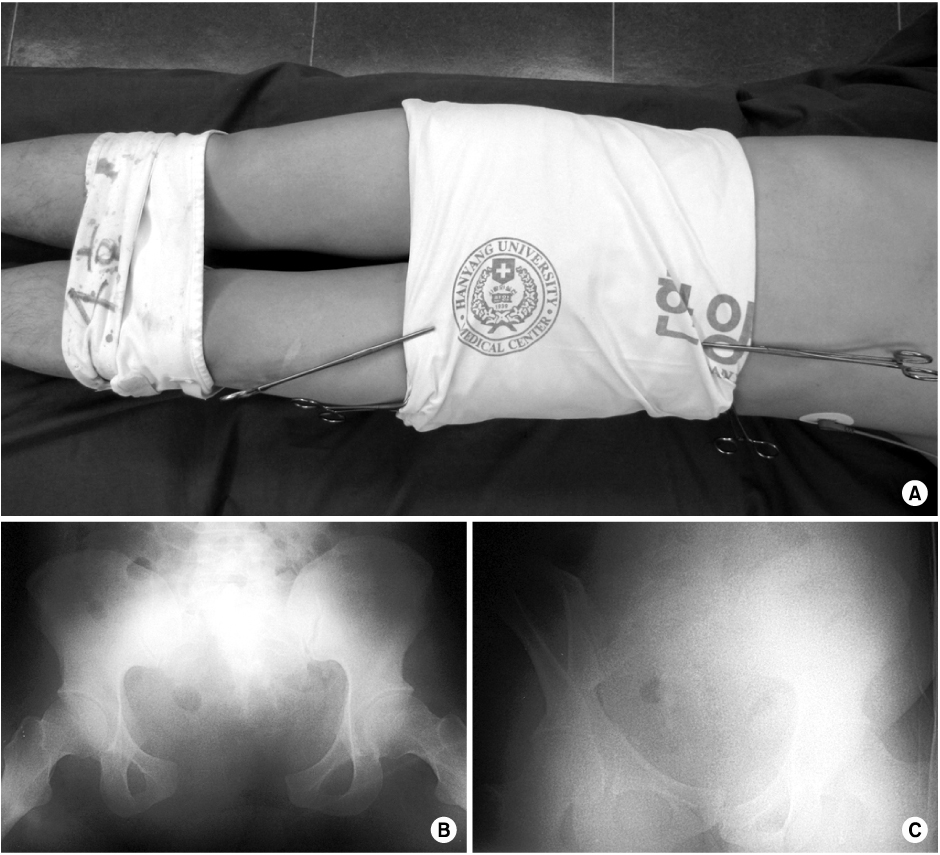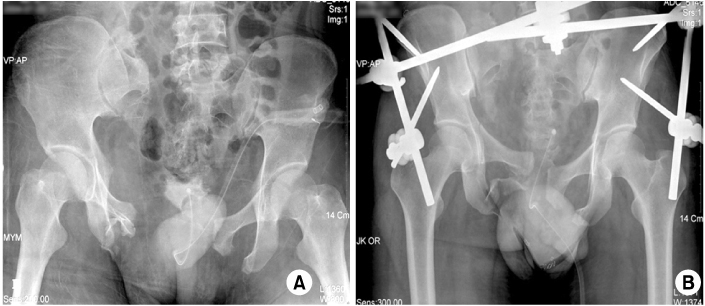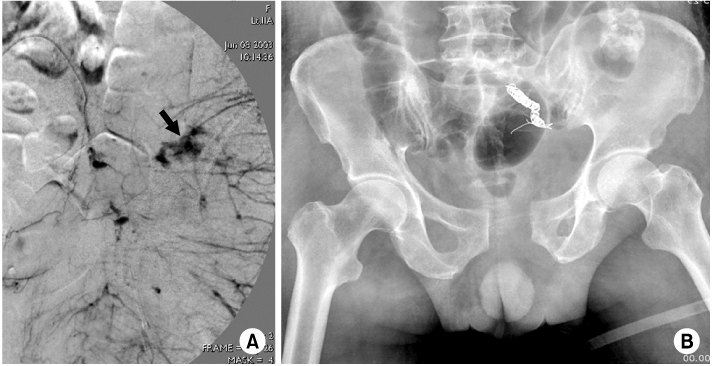J Korean Fract Soc.
2010 Jul;23(3):341-345. 10.12671/jkfs.2010.23.3.341.
Pelvic Fracture Issues
- KMID: 1712351
- DOI: http://doi.org/10.12671/jkfs.2010.23.3.341
Abstract
- No abstract available.
Figure
Cited by 1 articles
-
Surgical Fixation of Sacroiliac Joint Complex in Unstable Pelvic Ring Injuries
Kwang-Jun Oh, Seok-Min Hwang
Hip Pelvis. 2012;24(2):139-147. doi: 10.5371/hp.2012.24.2.139.
Reference
-
1. Balogh Z, Caldwell E, Heetveld M, et al. Institutional practice guidelines on management of pelvic fracture-related hemodynamic instability: do they make a difference? J Trauma. 2005. 58:778–782.
Article2. Blackmore CC, Cummings P, Jurkovich GJ, Linnau KF, Hoffer EK, Rivara FP. Predicting major hemorrhage in patients with pelvic fracture. J Trauma. 2006. 61:346–352.
Article3. Bottlang M, Krieg JC, Mohr M, Simpson TS, Madey SM. Emergent management of pelvic ring fractures with use of circumferential compression. J Bone Joint Surg Am. 2002. 84-A:Suppl 2. 43–47.
Article4. Cook RE, Keating JF, Gillespie I. The role of angiography in the management of haemorrhage from major fractures of the pelvis. J Bone Joint Surg Br. 2002. 84:178–182.
Article5. Cothren CC, Osborn PM, Moore EE, Morgan SJ, Johnson JL, Smith WR. Preperitonal pelvic packing for hemodynamically unstable pelvic fractures: a paradigm shift. J Trauma. 2007. 62:834–839.
Article6. Dyer GS, Vrahas MS. Review of the pathophysiology and acute management of haemorrhage in pelvic fracture. Injury. 2006. 37:602–613.
Article7. Mattox KL, Bickell WH, Pepe PE, Mangelsdorff AD. Prospective randomized evaluation of antishock MAST in post-traumatic hypotension. J Trauma. 1986. 26:779–786.
Article8. Metz CM, Hak DJ, Goulet JA, Williams D. Pelvic fracture patterns and their corresponding angiographic sources of hemorrhage. Orthop Clin North Am. 2004. 35:431–437.
Article9. Pennal GF, Tile M, Waddell JP, Garside H. Pelvic disruption: assessment and classification. Clin Orthop Relat Res. 1980. 151:12–21.
Article10. Sarin EL, Moore JB, Moore EE, et al. Pelvic fracture pattern does not always predict the need for urgent embolization. J Trauma. 2005. 58:973–977.
Article11. Yasumura K, Ikegami K, Kamohara T, Nohara Y. High incidence of ischemic necrosis of the gluteal muscle after transcatheter angiographic embolization for severe pelvic fracture. J Trauma. 2005. 58:985–990.
Article12. Young JW, Burgess AR, Brumback RJ, Poka A. Pelvic fractures: value of plain radiography in early assessment and management. Radiology. 1986. 160:445–451.
Article
- Full Text Links
- Actions
-
Cited
- CITED
-
- Close
- Share
- Similar articles
-
- Surgical Treatment of Malunion and Nonunion after Pelvic Bone Fracture
- A Clinical Study of Lower Urinary Tract Injury Associated with Pelvic Bone Fracture
- Relationship of the patterns of pelvic bone fracture and bladder rupture
- Observations on Pelvic Fractures and Lower Urinary Tract Injuries
- Clinical Experience of Undetected Pelvic Bone Fracture during Treatment of Pelvic Pain





